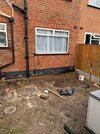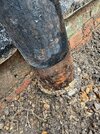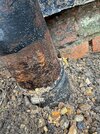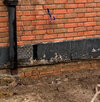Hey everyone,
I'm covering the damp line of my flat with concrete since previous owner got rid of it for aesthetic reasons. The part that was in contact with concrete looks really rusty and weak.
The pipe will be covered with concrete on Friday. My questions are:
1) Does the pipe looks ok to you? Will it survive in the concrete for years to come ? or it'll give up
2) Is there any spray, felt or sleeve I can use to extend the life of it?
3) If you are suggesting for me to change? would you please list all the items I need in order to change the pipe on screwfix or toolstation? I have angle grinder. There is already a sleeve underneath it.
Thank you for your help
I'm covering the damp line of my flat with concrete since previous owner got rid of it for aesthetic reasons. The part that was in contact with concrete looks really rusty and weak.
The pipe will be covered with concrete on Friday. My questions are:
1) Does the pipe looks ok to you? Will it survive in the concrete for years to come ? or it'll give up
2) Is there any spray, felt or sleeve I can use to extend the life of it?
3) If you are suggesting for me to change? would you please list all the items I need in order to change the pipe on screwfix or toolstation? I have angle grinder. There is already a sleeve underneath it.
Thank you for your help






